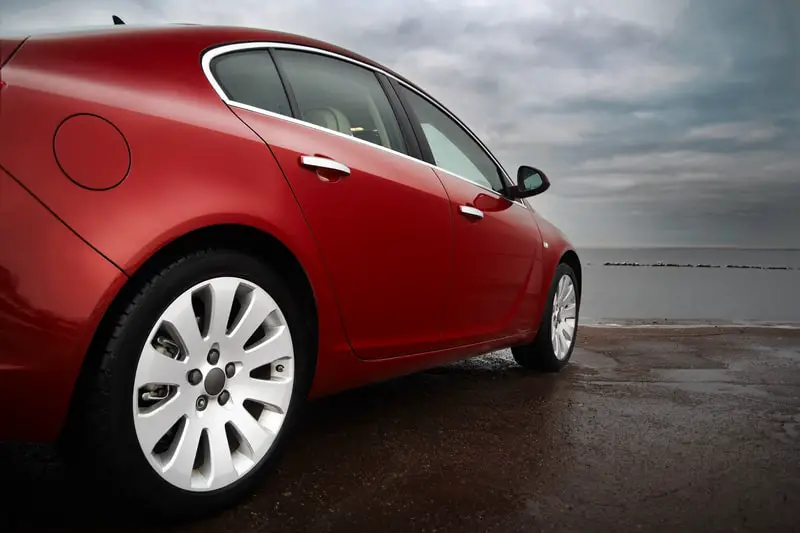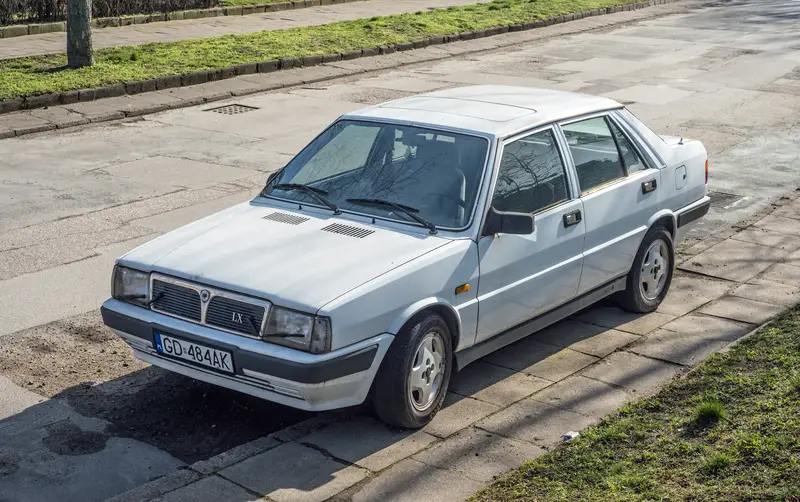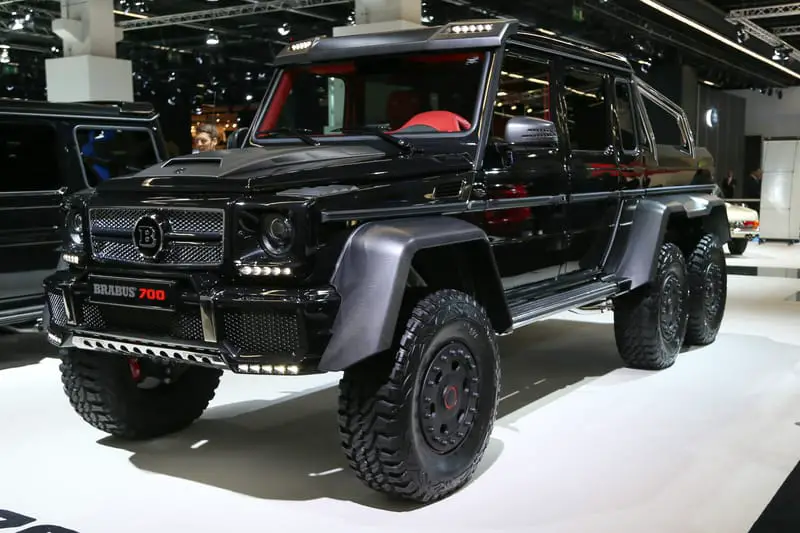
Most cars have four wheels and transport people. According to the Cambridge Dictionary, a car is a vehicle with four wheels. Other definitions of a car include a vehicle moving on wheels, an autocycle, or a three-wheeler.
To be considered a car, there must be at least three wheels. Cars can have between three and ten wheels, depending on the design. However, 99.98% of all cars have 4 wheels. A car with four wheels will be safer, more stable and have a better grip than a three-wheel car.
Having four wheels on a car is the norm because of physical and scientific principles. Scientific principles of motion and maintaining stability while being in motion are essential.
The shape of a vehicle also determines its weight distribution. Since most cars are rectangular, four wheels on a vehicle distribute the weight the most effectively.
Axles Influence Number Of Wheels On A Car
An axle is the central shaft carrying the weight of a car and connects two wheels. An axle transfers power from the car engine to move the wheels. Axles, attached by bearings, rotate with the wheels when a car turns.
Axles on vehicles are dependent on design, size, and weight. Heavier vehicles will need extra axles to support and distribute the weight evenly. A car with more axles needs a more significant area to turn.
Most cars have two axles to drive four wheels. Front axles or steering axles are in the front and connect the front wheels; they help steer a vehicle.
Rear axles or drive axles come in two halves and give power to the wheels; most rotate with the wheels and are live axles. Finally, stub axles are connected to the front wheels using a kingpin.
A car with more than four wheels will have more than two axles. CV, or ‘constant velocity, is a type of drive shaft used on front-wheel drive, all-wheel drive, and certain rear-wheel drive vehicles.
For example, a front-wheel-drive car has two CV axles for each front wheel, and an all-wheel-drive car has four CV axles.
Why Do Most Cars Have Four Wheels?

The main reason cars have four wheels is that they are more streamlined. Four wheels are best for turning as the car is more balanced.
In addition, four wheels distribute a vehicle’s weight more equally. As a result, acceleration efficiency is superior in a four-wheel vehicle compared to that of a three-wheeled car.
Four wheels on cars are also related to the number of axles a vehicle has; axles support the mass of a car. Each axle requires wheels at each end. Therefore, the longer the vehicle, the more axles it needs, increasing the need for more wheels.
Increased stability and steering are also a feature of the four-wheeled car. Passengers and drivers will have a smoother ride because traction is enhanced, especially on slippery roads. In addition, four-wheeled vehicles are less likely to tip over when going around corners.
Cars With More Than Four Wheels

Cars that have more than four wheels are either off-road or all-terrain vehicles. These cars offer better traction and utility by adding more wheels. In addition, having six wheels on a car increases load capacity and stability.
They can accelerate faster, corner better, and look more remarkable than the four-wheel car. There will always be some debate about whether some six-wheeled vehicles can be considered cars or are they trucks.
Some exciting cars with more than four wheels include Land Rover’s Defender Flying Huntsman, Ford’s Hennessey VelociRaptor and Mercedes-AMG G 63 6×6, and the 8×8 Avtros Shaman.
Advantages of Three-Wheel Cars
Three-wheeled cars first arrived on the scene in the late 19th century. Karl Benz introduced the Benz Patent Motorwagen in 1885, and it was a three-wheeled open-air car.
Morgan Motor Company produced three-wheeled sports cars from 1913 to 1952. In 2022, Morgan relaunched their three-wheel Super 3 series sports cars.
Three-wheel cars with two wheels at the front have a ‘tadpole’ wheel configuration, and two wheels at the back have a ‘delta’ configuration. A tadpole design makes cornering at speed better and gives more stability and control with steering and braking.
Delta configuration cars, standard in India and Sri Lanka, are usually bigger, slower, heavier, and less sporty; they also allow better visibility.
This configuration is front-wheel drive and is more fuel efficient, easier to drive, and less expensive to run. Rear-wheel drive tadpole configurations are more costly and require more precision.
A criticism of the Delta configuration is that it can tip over more quickly. The vehicles are, however, designed to operate at a maximum speed of 50km h (31 mph), with most cities having an average speed of below 30km /h (19 mph), so this is not usually a significant problem.
Tadpole and delta three-wheel vehicles are popular in many Asian, South American, and African cities. Three-wheeled cars are widespread in Asia, used to transport goods and people over short distances to locations within 15 minutes; it is a cheap way of getting around the cities.
In many countries, a three-wheel car is a motorcycle; this makes licensing cheaper and more accessible as no automobile license is required. In addition, three-wheeled vehicles have a lower center of gravity than a motorcycle, making them more stable.
Three-wheel cars can transport the same amount of people as cars. They often have smaller engines, so they are lighter on fuel. Having one wheel less also means no need for a differential gearbox.
The power-to-weight ratio is improved because power is transmitted directly to the road through the wheel. The wheel can be located either at the front or the back of the vehicle.
Although the teardrop shape of a three-wheel vehicle is the most aerodynamic, turning the vehicle reduces its efficiency. The combined advantages of a car and a motorcycle are evident in a three-wheeled vehicle, but so are some disadvantages.
Three-wheeled cars are slower with less luggage-carrying ability; they are more unstable and could tip over.
Conclusion
Although there are various three, six, and eight-wheeled cars worldwide, most modern vehicles have four wheels.
As a result, three-wheeled cars are reappearing on the market; for reasons such as price and fuel efficiency. Four-wheeled cars, however, remain popular due to better stability, traction, and steering.
